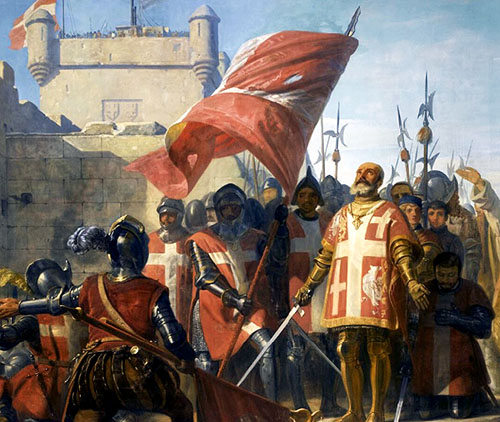Featured Author
 Scribe
Scribe
Aldarion submitted a new blog post:
Building a Fantasy Army — Weapons & Tactics
This article is by Toni Šušnjar.

In Antiquity and early the Middle Ages, the main weapon was the spear. Only a few exceptions appeared: Roman legions, which used javelins instead, and Macedonian pike phalanx with its sarissa. In the later Middle Ages, the main weapon could be a pike or a polearm (such as polehammer, poleaxe, halberd etc.), before the pike made its return in early modernity. Ranged weapons were not used to cause casualties, but rather to inconvenience the enemies and break up their formation.
Weapons and tactics will adapt to each other, as well as to the terrain and the enemies faced – but adaptations will be done within the boundaries of the society. A society without a significant tradition of horse archery will not counter horse archers with their own, but rather with foot archers. Horse archery was important for nomadic societies, because they could not afford the casualties which resulted from the shock and attrition tactics of the settled societies.
Weapons and armour likewise have a relationship, but since armour is the more difficult to produce of the two, it is developments in armour which typically drive the adaptation of weapons, rather than the other way around. As mail became more prevalent, weapons adapted too – swords and spears became pointier, as did arrows, and the couched lance technique replaced the spear thrust. With the development of plate...
Continue reading the Original Blog Post.
Building a Fantasy Army — Weapons & Tactics
This article is by Toni Šušnjar.

In Antiquity and early the Middle Ages, the main weapon was the spear. Only a few exceptions appeared: Roman legions, which used javelins instead, and Macedonian pike phalanx with its sarissa. In the later Middle Ages, the main weapon could be a pike or a polearm (such as polehammer, poleaxe, halberd etc.), before the pike made its return in early modernity. Ranged weapons were not used to cause casualties, but rather to inconvenience the enemies and break up their formation.
Weapons and tactics will adapt to each other, as well as to the terrain and the enemies faced – but adaptations will be done within the boundaries of the society. A society without a significant tradition of horse archery will not counter horse archers with their own, but rather with foot archers. Horse archery was important for nomadic societies, because they could not afford the casualties which resulted from the shock and attrition tactics of the settled societies.
Weapons and armour likewise have a relationship, but since armour is the more difficult to produce of the two, it is developments in armour which typically drive the adaptation of weapons, rather than the other way around. As mail became more prevalent, weapons adapted too – swords and spears became pointier, as did arrows, and the couched lance technique replaced the spear thrust. With the development of plate...
Continue reading the Original Blog Post.
